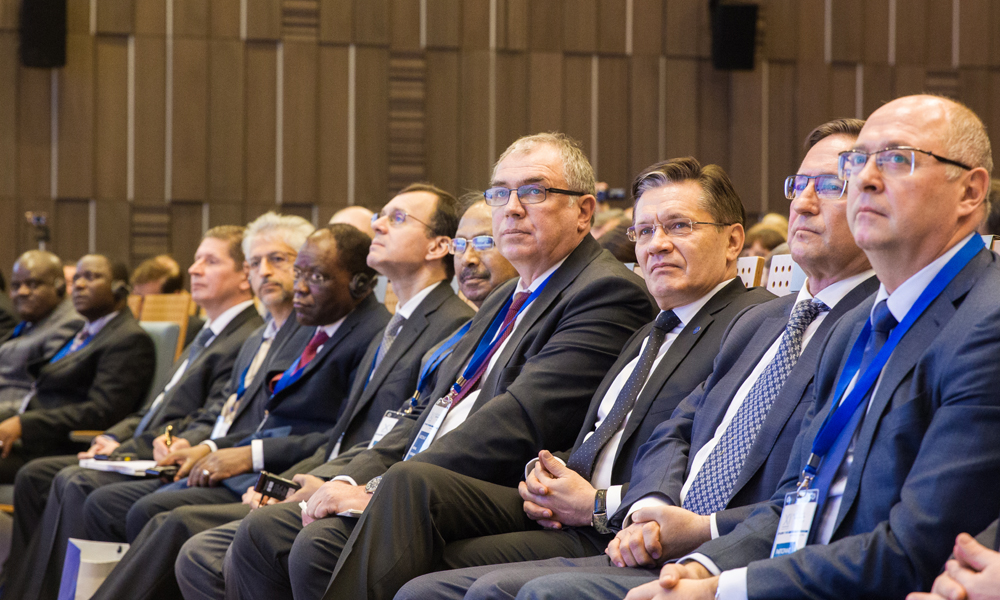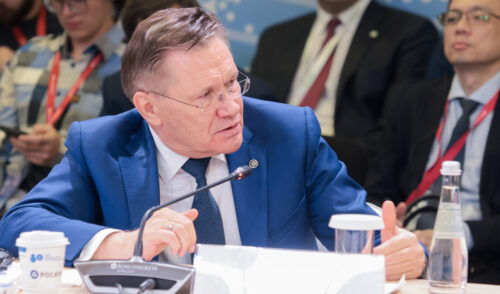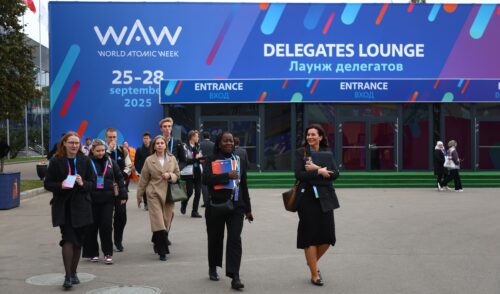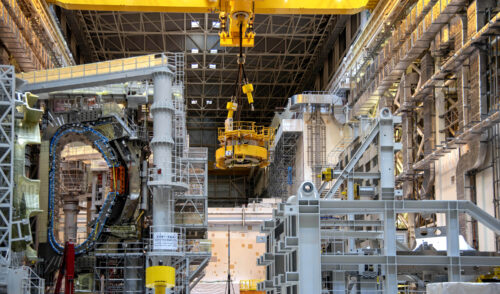
Nuclear Underpins Sustainability
back to contentsDiscussions at the forum were centered on sustainability, safety and cost efficiency of nuclear power, regulatory issues, nuclear decommissioning, approaches to site rehabilitation, public relations and awareness programs in nuclear power projects.
An in-depth discussion was held over the nuclear contribution to improvement of the global environment. The main conclusion made at the forum was that sustainability is not achievable without nuclear energy. Key steps to achieve it are set out in the climate change agreement signed in Paris in 2016. It is hardly possible to keep the global temperature rise well below 2ºС without nuclear energy. No less impossible is the development of nuclear energy without a transparent dialog with the public. Attention to public awareness is paid by every country, whether having a developed nuclear industry or just developing it. Many speakers noted that Rosatom built public relations based on trust.
Speaking at the plenary meeting, Rosatom CEO Alexei Likhachov said that the nuclear industry had demonstrated openness over the last decade, calling the community for a closer dialog. “We have overcome the lack of trust and fear rooted in the time when the nuclear industry was closed. Our relations with local communities have reached new heights, and we are ready to engage international experts for environmental assessments and public reviews.” Rosatom CEO cited an environmental impact assessment of the new reactors constructed at the Leningrad power station as an example of public involvement. The assessment was arranged by the Green Cross non-governmental organization and involved environmental experts from seven countries (Russia, Finland, Lithuania, Hungary, Belarus, Kazakhstan and Armenia). Around 30 recommendations made during the audit were taken into account by the station’s management. International expertise has been and is used by Rosatom as a key driver of its foreign policy, particularly in emerging nuclear countries.
Nuclear legacy management was another point made by Alexei Likhachov. He said that the Nuclear and Radiation Safety federal target program addressed the most severe environmental and radioactive problems inherited from the Soviet nuclear past. Two major projects mentioned by Rosatom CEO are the decommissioning of Lake Karachay, the most dangerous open-air storage pool for spent nuclear fuel (SNF), and rehabilitation of the Techa reservoir cascade dam. Other achievements include a decrease in SNF volume in on-site storage facilities and a new technology for safe decommissioning of uranium graphite reactors used to produce weapon-grade plutonium. All these projects are provided for in the Nuclear and Radiation Safety 2030 federal target program.
Comments
Sergei Baranovsky, Deputy Chairman of Rosatom’s Public Council and President of Green Cross Russia
There is no doubt that nuclear energy plays an important role in CO2 emission reduction, although radical environmentalists are not eager to admit it. Every rationally thinking expert or person with scientific background holds this view and proves it with figures. Nuclear energy is a very effective tool to reduce emissions of CO2 and methane, which is 23 times more harmful for the environment than CO2. Emissions can be reduced through many ways. One of them is to replace carbon energy with nuclear, which has almost no hazardous emissions, rather than with renewables, such as wind and solar. This does not mean that renewables and civil nuclear energy are competitors – of course, they must complement each other. We all know perfectly well that we cannot replace carbon energy, which is the main contributor to the climate change, with alternative power sources only. Nuclear energy is much more effective here. As for the challenges faced by the nuclear industry, even a disaster on a scale of Fukushima cannot shatter optimistic expectations shared by every sober-minded person in respect of the nuclear energy development. Today, it is the only 100% alternative to ‘dirty’, or carbon-based, energy. Rosatom has also achieved noticeable progress in the radioactive waste management. It is not as fast and dramatic as many of us would like it to be, but the process is running. The first federal program targeting nuclear and radiation safety improvements have been completed, and I have no doubt that the second program will be also a success.
Michael Chudakov, IAEA Deputy Director General
Nuclear energy, like renewables, produces minimal CO2 emissions. If there are no accidents, nuclear stations are the cleanest in terms of environmental impact. But even in case of an accident, nuclear as a source of power has a minimal impact on health and environment in Chernobyl and Fukushima if viewed from the operation perspective. Unlike nuclear, coal and other high carbon energy sources cause more than 7 million deaths related directly to heavy metal and CO2 emissions, according to WHO. Unofficial data is likely to be higher. The nuclear industry has nothing of the kind. Health protection here is the best among all the other power industries. I would like to remind you that the nuclear industry prevents two gigatons of carbon dioxide from being emitted into the atmosphere – this is an undeniable contribution to greenhouse gas reduction and climate improvement. And this is not by chance that nuclear energy is a main choice of developing countries. At present, 30 countries use nuclear energy; about 30 more plan to do it, and climate improvement is not the only reason. Nuclear energy is used by the countries that strive to achieve a sustainable economic development. They understand it will be a driver of the economy and will create new jobs. As you know, one job at a nuclear station creates 5–6 jobs in allied non-nuclear industries. Nuclear energy brings new technology and production facilities, improves training and qualification of employees, and makes the country independent from coal or gas supplies. Uranium yields nearly 50,000 kilowatt hours of electric power per kilogram of initial material. If we reprocess it and use also plutonium 239, the amount of energy generated increases to 2.5 million kilowatt hours per kilogram of fuel. By contrast, one kilogram of coal yields only 3–5 kilowatt hours. It is also well known that fuel accounts for 70% of total power costs in carbon generation and only 7% in the nuclear industry. If the price of hydrocarbons doubles, power generation costs will also double, while nuclear makes this price hike impossible. This aspect is very important when making economic plans on a 10-year or longer horizon. The service life of a nuclear station can be extended up to 80 years. Every country needs a power industry capable of providing base load.




